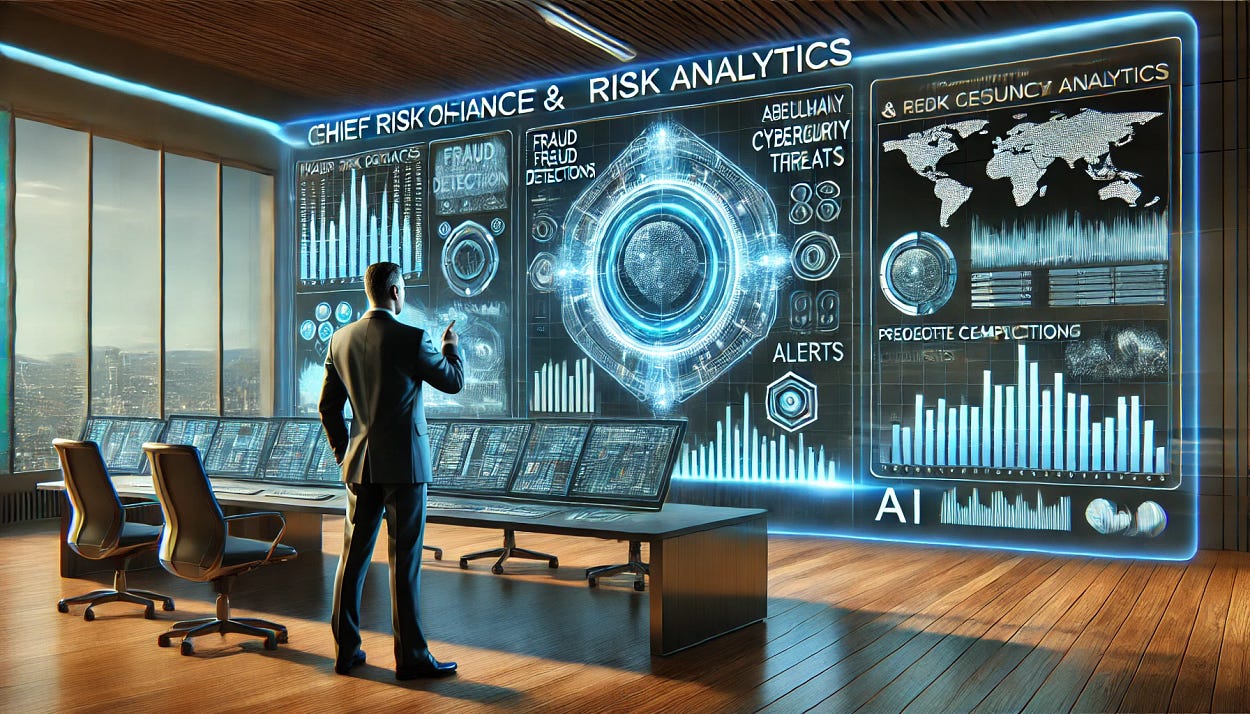Compliance & Risk Analytics: Guardian Angels of the Business
Driving the Analytics of 2030, not 2020

The future of analytics isn’t just about better dashboards or faster reports — it’s about rethinking how we harness data to drive competitive advantage. In my full article, Driving the Analytics of 2030, Not 2020, I explored how organizations need to shift their mindset and strategy to keep pace with the evolving analytics landscape. This section walk through Compliance & Risk Analytics: Guardian Angels of the Business, uncovering key insights and practical strategies for forward-thinking data leaders.
In heavily regulated industries or any large enterprise, Compliance & Risk Analytics is a crucial domain — ensuring the company doesn’t run afoul of laws or fall victim to avoidable risks. By 2030, analytics will act like an always-on guardian angel, watching for threats and raising alarms in real time.
Risk Modeling and Simulation
Companies have long used models for financial risk (credit scoring, market risk VaR models in banks) and operational risk. The future will bring more integrated risk analytics. Picture a “risk dashboard” that shows, in one place, the status of all key risks: financial, cyber, supply chain, regulatory, etc., with AI estimating the probability and impact of each. For example, a bank could have an AI model that continuously learns from transaction data to update fraud risk and credit default risk. By 2030, these models will be more self-updating (using online learning from new data) and more transparent, thanks to advances in explainable AI. McKinsey notes that banks leveraging data analytics for risk can cut losses by up to 20% (Top 10 Use Cases of Data Analytics in Banking — Scikiq — a big incentive to invest in these systems.
Fraud Detection & Cybersecurity
This is one area where AI already shines. Credit card companies and banks use machine learning to detect fraudulent transactions in milliseconds. As data grows, these systems will get even better. By 2030, a retailer might spot that a series of returns and purchases doesn’t fit a typical pattern and flag a possible fraud ring, or an insurance company’s AI will detect an abnormal pattern in claims that suggests fraudulent behavior. In cybersecurity, analytics will continuously monitor network traffic and user behavior to catch intrusions — essentially an AI “security analyst” that never sleeps. Large telecoms like AT&T process billions of network events; using analytics, they can pinpoint anomalies (like an unusual data exfiltration at 2am) and respond immediately. AI agents will likely handle first-line cyber defense (identifying and isolating a compromised device, for example) before human experts intervene.
Regulatory Compliance
Industries like healthcare, finance, and pharmaceuticals face evolving regulations (HIPAA, SOX, GDPR, etc.). Analytics can help by tracking compliance metrics (e.g., how many records have been accessed and by whom, to detect privacy violations) and by ensuring data integrity. Compliance analytics platforms by 2030 might automatically audit 100% of transactions for compliance, instead of sample-based audits. For instance, if a new consumer privacy law is passed, an AI system could scan all data handling processes in the company to find potential violations (maybe flagging that marketing is storing data longer than allowed). We might even see “regtech” AI that reads new regulations and compares them with company practices to suggest changes — like a compliance copilot.
Case Study — The Financial Industry:
Big financial institutions are already moving toward this future. JP Morgan built a program called COiN that uses AI to review legal documents and contracts rapidly, something lawyers and compliance officers used to do manually. This not only cuts cost but reduces human error in compliance. Another example: Chief Risk Officers (CROs) in banks increasingly rely on dashboards that aggregate risk metrics from credit models, market simulations, and operational loss databases. They use scenario analytics (stress tests) to see how the bank would hold up under, say, a 30% market drop. By 2030, such scenario analysis could be aided by generative AI — generating realistic crisis scenarios and testing the firm’s resilience, much like war-gaming but with data.
Ultimately, Compliance & Risk Analytics protect the enterprise’s longevity. In a world of increasing uncertainty (be it cyber threats, regulatory changes, or black swan events), having analytics that can quickly sense and respond to risk is like having a high-tech early warning system. Companies that invest in this will navigate storms far better than those flying blind
The path to 2030’s analytics landscape isn’t about incremental improvements — it requires bold rethinking and strategic transformation. In the next article, we’ll dive into Operational Efficiency Analytics.